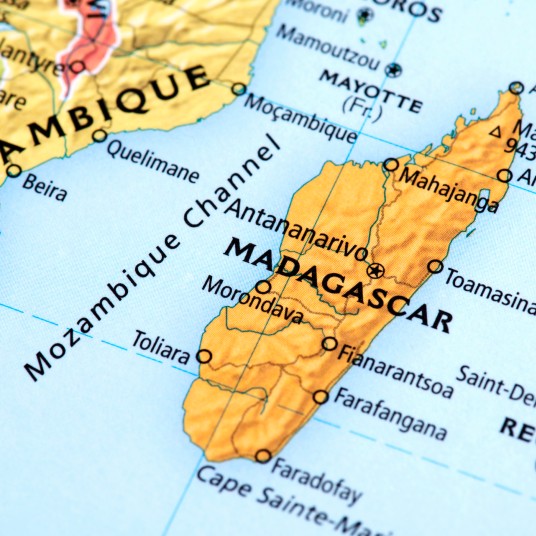Solar energy and sustainable agriculture to Madagascar's rescue
Innovation and renewable energy could be key drivers to tackling the island's emergency food situation.
Madagascar, Africa's big red island, is in an unprecedented state of food emergency. The extreme drought that has plagued the region in recent years has brought the island nation to the brink of the first ever famine caused by the effects of climate change on agriculture.
As water scarcity becomes more severe, innovative solutions become more vital. In Madagascar and other parts of the world, work is underway to strengthen the resilience of vulnerable communities by implementing sustainable agricultural practices and solar-powered drip irrigation systems.
What will I read about in this article?
- First famine caused by climate change
- Projects to curb the impact of climate change on agriculture
- Success story: Montesusín
Hunger, the most devastating consequence of climate change in relation to agriculture
 Madagascar has been experiencing a devastating drought in recent years that has led to malnutrition in much of the population. The south of the country is suffering the first famine caused by climate change, with millions of people relying on emergency aid to survive.
Madagascar has been experiencing a devastating drought in recent years that has led to malnutrition in much of the population. The south of the country is suffering the first famine caused by climate change, with millions of people relying on emergency aid to survive.
The area is suffering from a drought unprecedented in the last 40 years. A shortage of water to which must be added a series of extreme meteorological phenomena that have resulted in more than a million malnourished people who practically feed only on cactus and wild fruits. And who, in the worst cases, have only had ashes and dirty water to put in their mouths, as El País reports.
In some agricultural areas, 94 % of the land has been left barren. Crops suffer not only from the lack of water, but also from strong winds that scour away the fertile topsoil. This situation was made worse by cyclones such as Batsirai and Freddy, which destroyed villages and fields. In these conditions, communities are finding it difficult to grow staple crops such as maize.
How the challenge of climate change for agriculture is being addressed
Agriculture represents a paradox in the climate change crisis: it is simultaneously a causal agent and one of the main sources of its effects. It generates 23% of the global CO2 emissions that contribute to global warming, while it suffers from increasingly severe droughts that threaten its existence in many regions worldwide.
"In some agricultural areas, 94% of the land has been left barren.”
Experts and international agencies consider it essential to develop innovative solutions that can break this cycle in order to ensure the sustainability of a sector that feeds us on a daily basis. Organisations such as FAO are working to strengthen the resilience of vulnerable households by implementing sustainable agricultural practices.
In Madagascar, for example, local farmers' associations have received drought-resistant seeds and tools and training in sustainable agricultural practices.
In addition, FAO has designed a solar-powered drip irrigation system that ensures year-round access to water for both irrigation and drinking. These systems use solar panels to generate electrical energy that powers a hydraulic pump. This pump is responsible for drawing water from a source (such as a well or a reservoir) and distributing it to the crops through an irrigation system, which is often drip irrigation.
An additional advantage is that solar panels can generate energy even at times when irrigation is not needed, offering opportunities to use agricultural machinery and equipment powered by electricity.
According to the UN, some households visited reported that during the peak of the crisis they had only cactus as their daily food. Now, thanks to more resilient crops, they have enough to eat "with dignity" and can afford two meals a day.
"Thanks to more resilient crops, they have enough to eat "with dignity" and can afford two meals a day".
The case of Montesusín: solar-powered irrigated agricultural fields
 The installation of solar-powered irrigation systems, such as those developed in Madagascar, is an example of how the carbon footprint of agriculture can be mitigated and adapted to changing conditions.
The installation of solar-powered irrigation systems, such as those developed in Madagascar, is an example of how the carbon footprint of agriculture can be mitigated and adapted to changing conditions.
But the case of this island is not unique. ACCIONA Energy has installed the world's largest irrigation system powered by a solar plant without batteries in Montesusín (Spain).
The project in question proposes an innovative and sustainable solution for agriculture: the construction of a solar photovoltaic plant with an output of 1.58 MWp. This plant is intended to power the irrigation pumps of the agricultural plots in the area. What does this mean? That the energy used to irrigate the field is 100 % renewable, emission-free and locally generated.
In addition to being environmentally friendly, farmers will benefit from a stable and competitive energy price during the irrigation season, which runs from May to September. But they will also be able to make an economic profit by selling unused energy to the grid during non-irrigation periods.
This new system allows for a more efficient use of water, a resource that’s becoming increasingly scarce due to drought. The aim is to make the most of every drop of water available.
The challenge now is to ensure that these solutions are accessible and applicable on a global scale. To do this, it’s vital that governments, international organisations and stakeholders around the world work together to strengthen the resilience of food systems to climate change. Only in this way can we guarantee a sustainable and safe future for all.
Sources:







